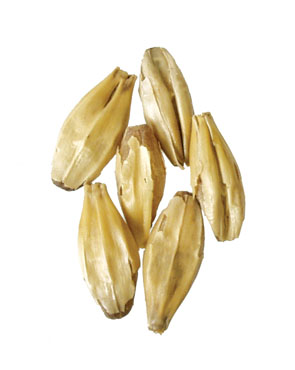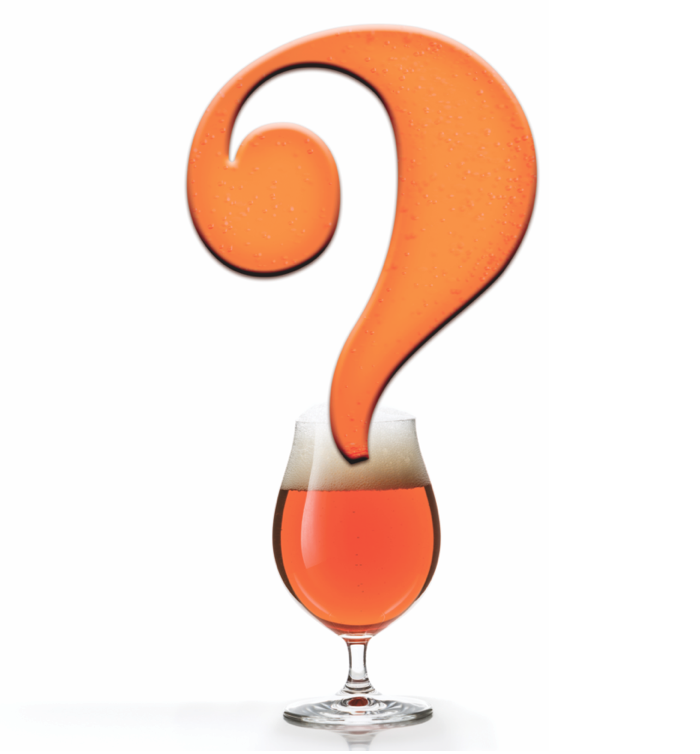Dextrin Malts
Q: I understand that DextraPils® gives body and head, but why? What is the process in making this malt and how does it break down in a mash? What type of sugars or starches does it provide? I do know that DextraPils® grain itself is crunchier and not as sweet as 2-row malt. I did a test and brewed my IPA recipe, but left out the DextraPils® and replaced it with 2-row malt. This was only about 5% of the grain bill. My OG went up 3 points. I have my gear dialed in and have been able to duplicate this recipe with the same numbers several times. So if you could please clear up what the science is behind DextraPils® I would greatly appreciate it.
— Justin Burdt • Oakland, California
A: DextraPils® is a specialty malt produced by the Great Western Malting Company located in Vancouver, Washington. DextraPils® is a type of crystal malt that is often referred to as dextrin malt. Other companies produce similar products, for example Briess Malting produces CaraPils® and Weyermann Malting produces Carafoam®, so for the sake of clarity in my answer I will refer to these malts as dextrin malts. These products are known to increase fullness, increase the final gravity and to enhance foam. These same properties are also associated with other types of crystal malt, but the difference is that dextrin malts are no darker than typical Pilsner malt nor do they add the caramel-like flavors associated with darker crystal malts.

All crystal malts are made by converting the starch in malted barley into what is basically wort before the malt is roasted. This is usually done by beginning with “green malt” or malt that has yet to be kilned. The green malt is heated to conversion temperatures (150-160 °F/66-71 °C) without allowing the grain to dry. This process is known as “stewing” and is usually performed in a roasting drum. Under these warm and moist conditions, the enzymes in green malt convert starch into fermentable and unfermentable sugars, also known as dextrins. Just like with mashing, the stewing temperature affects wort fermentability. Maltsters who produce these types of malts are protective of their processes, but if I had to wager a bet I would guess that the stewing process is carried out at the upper end of alpha-amylase’s temperature range in an effort to minimize the activity of beta-amylase. These conditions would favor the production of dextrins and minimize the production of maltose, which of course is fermentable.
After the conversion rest, the malt is kiln-dried and roasted to promote the Maillard reaction. This is a reaction involving so-called reducing sugars and amino acids. The reducing sugar involved in the reaction can be the monosaccharide glucose, or it can be the one end of a dextrin polymer that is described as the reducing end. Although starch and dextrins in malt will be converted to fermentable sugars in the mashing process, carbohydrates that participate in the Maillard reaction yield compounds that are not converted to fermentable sugars during mashing. Dextrin malt has very little color, so the process must be controlled to limit color development. The malting and stewing conditions and the kilning and roasting profile are critical to minimizing color and flavor development. Under-modified malts are probably used for dextrin malts to limit protein breakdown during malting. The result of the process is a type of crystal malt containing Maillard reaction products (MRPs) with very little color or flavor.
I do not know the exact reason why these malts improve foam stability. The general explanation is that the types of MRPs associated with dextrin malts contain more foam-positive compounds than pale malt types. Under-modification is certainly one way to improve foam stability. Foam is stabilized by foam-positive proteins and the process used to produce dextrin malts clearly results in a greater concentration of these types of proteins than the process used to produce pale malt. Like other crystal malts, dextrin malts do not have to be mashed and homebrewers using extract with specialty malts added by steeping can add dextrin malts to their beers. This topic is really the “black box” of these products; no companies producing very pale dextrin malts explain their proprietary process and seem to take great pleasure in the air of mystique surrounding their products.
One thing that is simple to answer is the reason your OG increased when you replaced the DextraPils® with pale malt. The pale malt has a higher extract yield, but not enough to account for a 3-point increase. You noted in your question that you noticed that DextraPils® is crunchier than 2-row. This is one way to describe the texture of dextrin malt, the description I would use is hard, almost like a rock! You may not have been milling the DextraPils® fine enough to obtain a very good yield. I hope this has given you a little more insight into dextrin malt.


